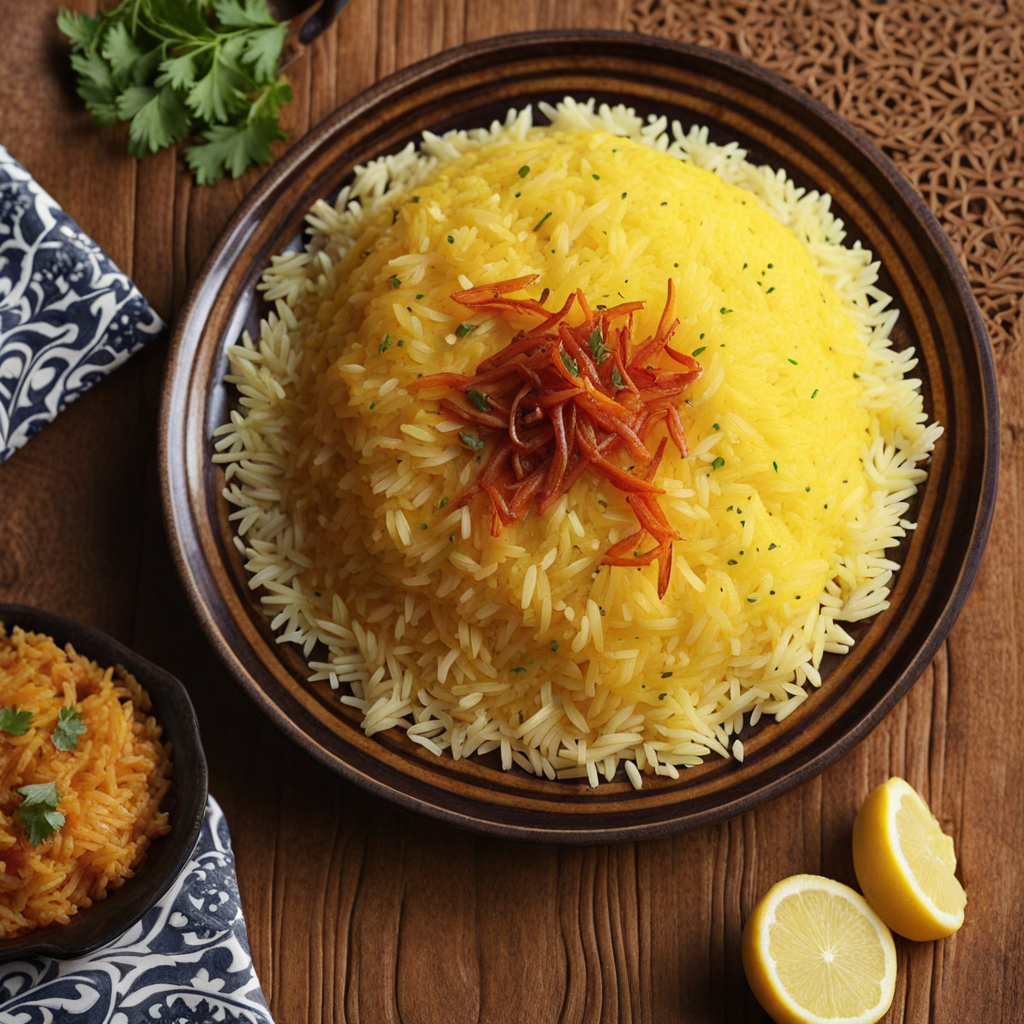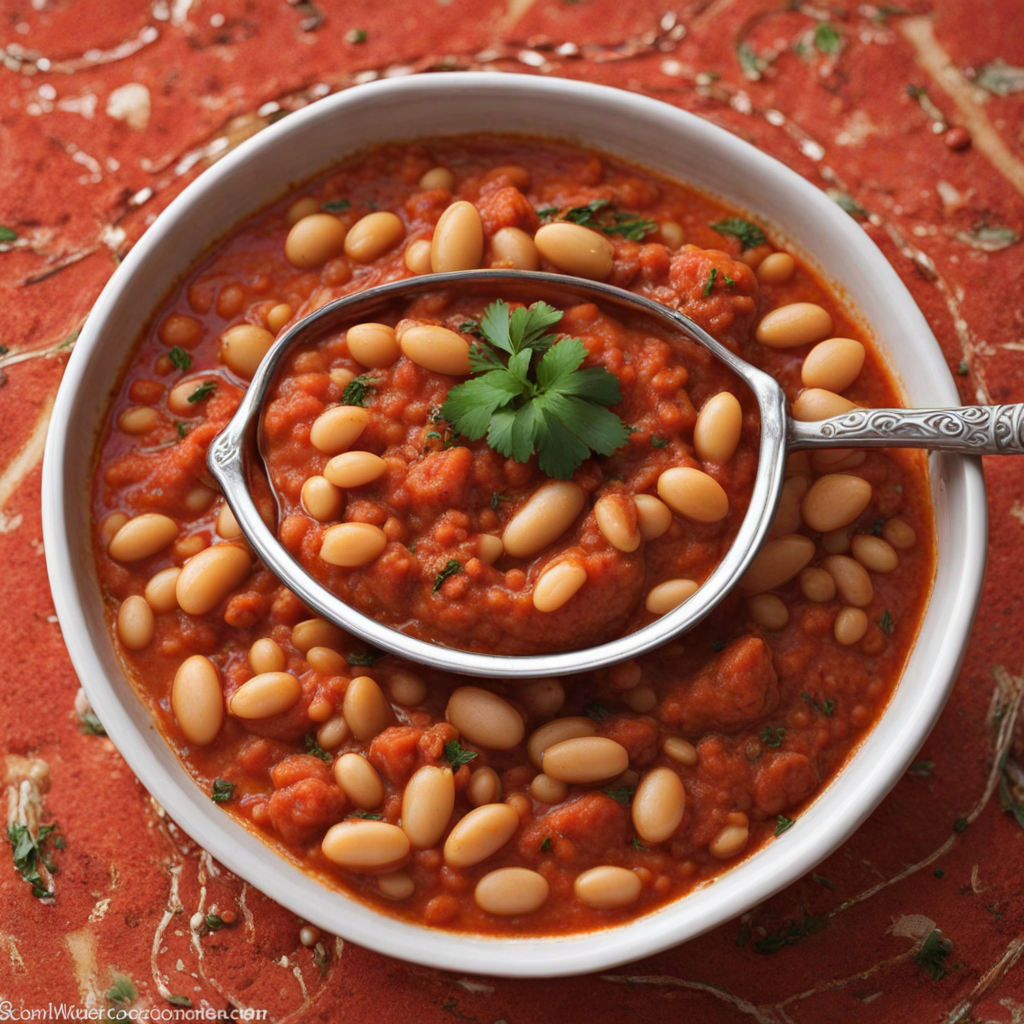Saffron Rice
Aruz bil Za'faran, or saffron rice, is a quintessential dish from Morocco that marries the rich culinary heritage of the region with the luxurious flavor of saffron, one of the most prized spices in the world. This dish encapsulates the essence of Moroccan cuisine, which is characterized by its bold spices, aromatic herbs, and a harmonious balance of flavors. The history of saffron rice in Morocco can be traced back to the Moorish influence on the country’s culinary practices. Saffron, originally cultivated in Persia, found its way to North Africa through trade routes and cultural exchanges. The spice became a staple in Moroccan kitchens, where it was used not just for its unique flavor but also for its vibrant golden hue, which elevates the visual appeal of any dish. Over centuries, saffron rice has evolved, incorporating local ingredients and cooking techniques that reflect the diverse influences of Berber, Arab, and Mediterranean cultures. The flavor profile of Aruz bil Za'faran is a delightful interplay of earthy, floral, and slightly sweet notes. The saffron threads impart a subtle richness that permeates the rice, while other spices such as cinnamon, cumin, and sometimes a hint of turmeric might be used to enhance the overall taste. The dish is often finished with a sprinkle of toasted almonds or raisins, adding a contrasting texture and a touch of sweetness that complements the savory elements. Preparation of Aruz bil Za'faran is both an art and a science, reflecting the meticulous nature
How It Became This Dish
The Enigmatic Journey of 'أرز بالزعفران' (Saffron Rice) in Moroccan Cuisine #### Origins: A Culinary Tapestry The dish known as 'أرز بالزعفران' or saffron rice holds a unique place in Moroccan culinary tradition, intertwining history with culture and symbolism. The origins of saffron rice in Morocco can be traced back to the influence of various civilizations that have shaped the region, particularly the Berbers, Arabs, and the Moors. Saffron, derived from the flower of Crocus sativus, is one of the most ancient spices known to humanity, prized for its distinct flavor and vibrant color. It is believed that saffron was introduced to North Africa by the Phoenicians, who traded it across the Mediterranean. Over time, it became a sought-after ingredient in Moroccan kitchens, cherished not only for its flavor but also for its association with wealth and luxury. The cultivation of saffron has deep roots in Moroccan soil, particularly in the Taliouine region, where the climate and altitude create the perfect conditions for saffron to thrive. The Berbers, known for their rich agricultural practices, were among the first to incorporate saffron into their cooking, often pairing it with rice and other grains. The introduction of rice to Morocco is attributed to Arab traders who brought it from Asia during the medieval period. The fusion of these two ingredients—saffron and rice—created a dish that would become emblematic of Moroccan hospitality and culinary artistry. #### Cultural Significance: A Symbol of Celebration In Moroccan culture, food is more than sustenance; it is a reflection of identity, tradition, and community. Saffron rice, with its golden hue and aromatic fragrance, is often reserved for special occasions and celebrations. It is commonly served during weddings, religious festivals, and family gatherings, showcasing the importance of hospitality in Moroccan society. The vibrant color of saffron rice symbolizes joy and prosperity, making it a fitting centerpiece for festive tables. The preparation of saffron rice is often a communal affair, where family members come together to cook and celebrate. This collaborative spirit reflects the deep-rooted values of kinship and community in Moroccan culture. As the rice is simmered with saffron, spices, and sometimes mixed with vegetables or meats, the air fills with a tantalizing aroma, inviting everyone to partake in the feast. The communal aspect of this dish reinforces social bonds and creates lasting memories, making it more than just a meal. #### Development Over Time: A Culinary Evolution Over the centuries, saffron rice has evolved, adapting to regional tastes and available ingredients while retaining its core elements. The traditional method of preparing saffron rice involves soaking the saffron strands in warm water to release their color and flavor before mixing them with the rice. This technique, passed down through generations, ensures that the rice absorbs the full essence of saffron. As Morocco opened its doors to foreign influences, particularly during the colonial period, saffron rice began to incorporate new flavors and ingredients. The French colonial presence introduced techniques and ingredients from European cuisines, leading to a fusion of flavors. Chefs began experimenting with saffron rice, adding elements such as cream, butter, and a variety of herbs, creating unique interpretations of the dish. Despite these changes, traditional saffron rice has remained a staple in Moroccan households. Home cooks often personalize the recipe, infusing their own family traditions and local ingredients. For instance, saffron rice may be paired with chicken or lamb, seasoned with a blend of spices like cumin, cinnamon, and coriander, reflecting the diverse spice trade that has long been a hallmark of Moroccan cooking. #### Modern-Day Saffron Rice: A Culinary Renaissance In recent years, there has been a resurgence of interest in traditional Moroccan cuisine, with chefs and home cooks alike striving to preserve and celebrate culinary heritage. Saffron rice has found its place in contemporary Moroccan dining, appearing on menus in restaurants that emphasize authentic flavors while also embracing modern culinary techniques. The rise of global cuisine has also led to the incorporation of saffron rice into various culinary contexts, reaching international palates. Chefs around the world have begun to experiment with saffron rice, using it as a base for a multitude of dishes, from seafood paellas to Mediterranean-inspired bowls. This globalization of saffron rice reflects the dish's versatility and the growing appreciation for Moroccan flavors. Additionally, the focus on sustainability and locally sourced ingredients has prompted a renewed interest in saffron cultivation in Morocco. Efforts to support local farmers and promote the use of organic saffron have emerged, ensuring that this precious spice remains a key component of Moroccan cooking for generations to come. #### Conclusion: A Dish Beyond Borders The journey of 'أرز بالزعفران' from its ancient roots to contemporary kitchens is a testament to the resilience and adaptability of Moroccan cuisine. Saffron rice encapsulates the rich tapestry of cultural influences that have shaped it over the centuries, serving as a bridge between past and present. As it continues to evolve and inspire, saffron rice stands as a symbol of Morocco's culinary heritage, inviting people around the world to savor its unique flavors and experience the warmth of Moroccan hospitality. In every bowl of saffron rice, there lies a story—a story of tradition, community, and the enduring power of food to bring people together. Whether enjoyed at a festive gathering or a quiet family meal, saffron rice remains a cherished dish, embodying the spirit of Morocco and its rich culinary legacy.
You may like
Discover local flavors from Morocco







